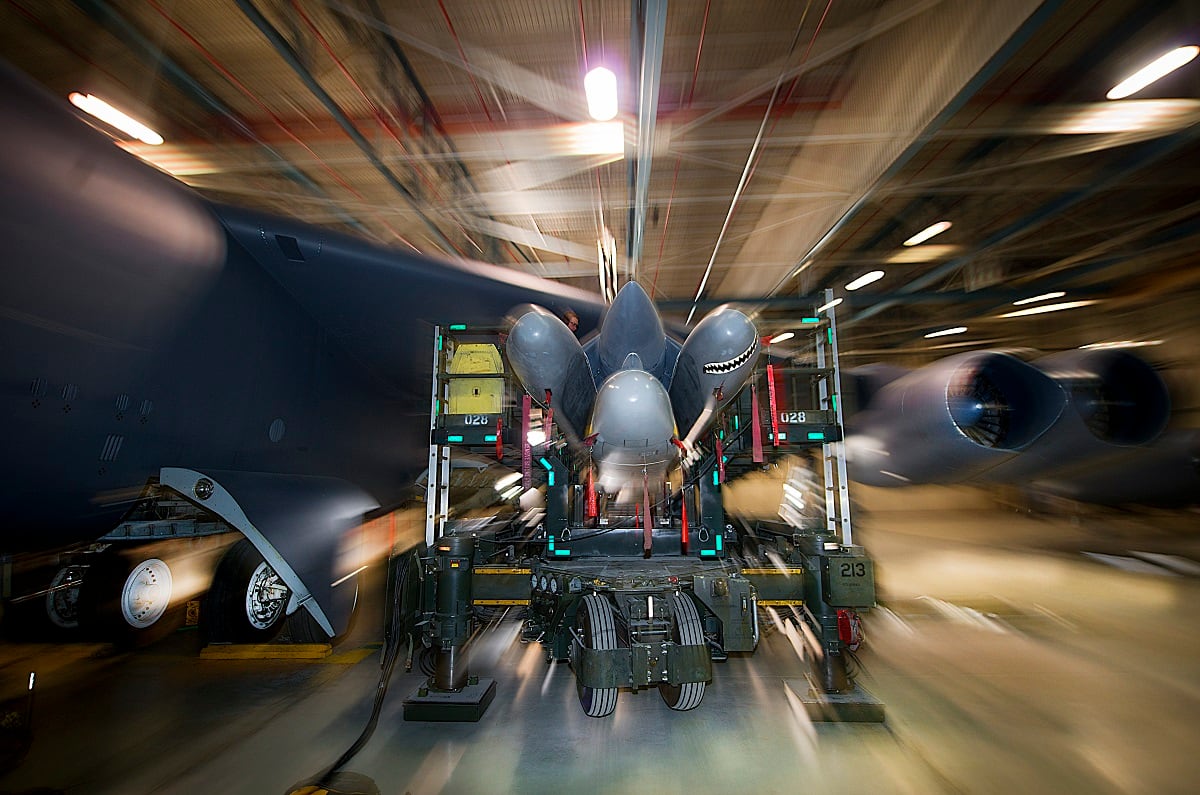We’re entering a new year of promise in our enduring mission to counter the threat of weapons of mass destruction, with the recently announced joint efforts of Interpol and the U.N., the shift from U.S. Strategic Command to U.S. Special Operations Command, and the recalibration of a “countering weapons of mass destruction,” or CWMD, posture by many nation states.
But we’re also living in a time of increased volatility and complexity.
In recent months, we’ve seen the global resurgences of COVID-19, the reappearance of Novichok nerve agents, the continued development of chemical and biological weapons, and the ability to deliver these weapons by intercontinental ballistic missiles, to name just a few troubling developments. Concurrently, WMD threats by nonstate actors are rising. Consider, for example, a violent extremist individual or organization getting its hands on the materials causing the next pandemic.
Reformulated strategies and reorganizations alone will not sufficiently protect against today’s highly complex, multiregional, overlapping threats by adversaries old and new. The shifting global landscape requires new thinking and solutions. As CWMD takes on a new sense of urgency in 2021, we must work not only together, but differently.
An overview follows of some major challenges we face in the CWMD environment today — illustrating the necessity of a mission-focused, integrated approach to strengthen CWMD efforts during this critical time.
Limited situational awareness across CBRNE: Today’s CWMD activities increasingly cross the boundaries of chemical, biological, radiological, nuclear and explosive, or CBRNE, threats. Yet, the CWMD community remains largely siloed, without a complete understanding of activities, capabilities and limitations across these categories.
The Interpol/U.N. five-year study is one step in increasing situational awareness, bringing together international and regional organizations, law enforcement agencies, and member countries to assess regional CBRNE threats by nonstate actors. Still, threats from nonstate actors often include single individuals inspired by violent extremist organizations who can be more difficult to detect in advance.
We need more efforts across departments and agencies toward a shared understanding of threats. Robust situational awareness will allow us to achieve:
- A shared view of mission status across the CWMD enterprise, so all mission partners are aware, engaged and in a ready state.
- Effective coordination of all mission partners.
- A high degree of responsiveness, adaptability and resilience.
Insufficient coordination at the national and international levels, and within CWMD coalitions: Are CWMD centers operating as cohesively, efficiently and effectively as they could be in terms of their planning and activities?
Again, efforts like the joint Interpol/U.N. initiative are a good start. They are engaging law enforcement agencies worldwide in prevention, preparedness and response efforts that Interpol can use in its CBRNE and Vulnerable Targets program as well as future capacity-building activities. But the dangers we face are becoming more dispersed, with threat networks proliferating across borders. We will need more partnerships like these across nations and coalitions.
The inherent complexity of the CWMD mission. To complicate matters even more, each CBRNE pillar includes different stakeholders, skill sets, strategies, tactics and authorities.
For example, counterproliferation responsibilities revolve around diplomatic, intelligence and military efforts. Nonproliferation typically involves the diplomatic and legal communities enacting and enforcing treaties and conventions. And consequence management brings first responders and hazardous materials teams together in incident response strategies.
RELATED

Continuously evolving threat actors. Digitally empowered threat actors have become more resilient, adaptable and sophisticated in their strategies and tactics. Not only are they able to carry out attacks more quickly, across disparate geographies, they have become highly networked online. Such coordination allows them to spread propaganda worldwide, recruit online, evade detection and crowdsource their attacks. At the same time, the know-how, materials and technologies needed to produce, obtain and deploy WMDs continue to proliferate and advance.
What do today’s challenges demand? An integrated, mission-focused approach to CWMD. Successfully addressing such complex, multidimensional threats requires a single, mission-focused, integrated framework for CWMD. Components of this framework include:
- Policies that clarify, align and optimize authorities, relationships and accountability of mission partners across the global CWMD community.
- Operations with integrated strategies, tactics, doctrine, partnerships and tools, along with the coordination and linkages necessary to integrate joint, interagency and multinational activities.
- People with clearly defined roles and functions, empowered by an elite CWMD culture built on world-class leadership, recruitment, training, education and domain expertise.
- Technology for integrating, analyzing and sharing immense amounts of information across secure domains.
- Management of technology, policy, people and operations as interdependent elements to enable prioritization of investments and resources, quick deployment of new technologies, surges in operations, effective risk management, and integration with larger defense efforts.
Aligning these dimensions into an integrated whole and empowering them with robust situational awareness will inform decision-making, reduce blind spots in mission coverage, and strengthen responsiveness and resilience across the CWMD landscape — even amid today’s increasingly complex CBRNE threats.
Retired Brig. Gen. William King is a senior fellow and principal focused on countering weapons of mass destruction for Booz Allen Hamilton. He previously served in the U.S. Army, most recently as the head of 20th CBRNE Command.








